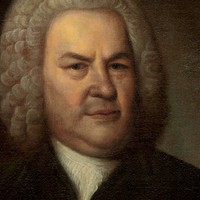Haydn’s Symphony No. 47




The scoring of Mozart’s Serenade for Winds in C Minor, K. 388—pairs of oboes, clarinets, bassoons, and horns—suggests that it was designed to serve as a festive piece, for use at some civic, probably outdoor, celebration. This would seem at odds, however, with the music’s gravitas: set in the stormy key of C minor, and comprising musical ideas of unsmiling severity. (Mozart would rework the Serenade in 1788 as the String Quintet in C Minor, K. 406.)
The opening Allegro’s first theme reveals Mozart to be an irrepressible font of melodic invention—a direct forebear, in this regard, to the following century’s “King of Song,” Franz Schubert. Following a dour unison statement, the theme spins forth a series of short melodic utterances, each of a distinct character, but which complement one another in seamless fashion: from plaintive, to aggressive, to coquettish in rapid succession, before the theme’s eloquent closing phrase.
The Andante responds to the first movement’s Sturm und Drang (“Storm and Stress”) with effortless melody set to transparent harmonies and delicate, featherweight textures. This is music that sits easily alongside Mozart’s most inspired slow movements.
The Menuetto is the Serenade’s most obviously festive feature. Yet even here, the music’s character is more angular, a bit surlier, than Mozart’s listeners might have expected from a wind band playing a genteel dance form. The minuet is a straightforward canon (think “Row, row, row your boat”). Mozart gets craftier for the contrasting Trio section, spinning a double canon in inversion: the second oboe presents the melody, taken up two measures later by the first oboe, but up a fourth and inverted (i.e., turned upside-down). Two measures later, the first bassoon repeats the second oboe melody, and the second bassoon inverts it, down a fourth.
The Serenade concludes with a set of seven variations on a beguiling theme. The most affecting of these—perhaps, indeed, one of the most exquisite passages of the entire work—is the seventh variation: a sinewy, chromatically rich transformation of the theme, which proceeds straightaway to the suddenly good-humored major-key coda.
Patrick Castillo ©2016


Get driving directions and find nearby parking.
Find dining options close to the venue.
View seating charts to find out where you'll be seating.
Get driving directions and find nearby parking.
Find dining options close to the venue.
View seating charts to find out where you'll be seating.
